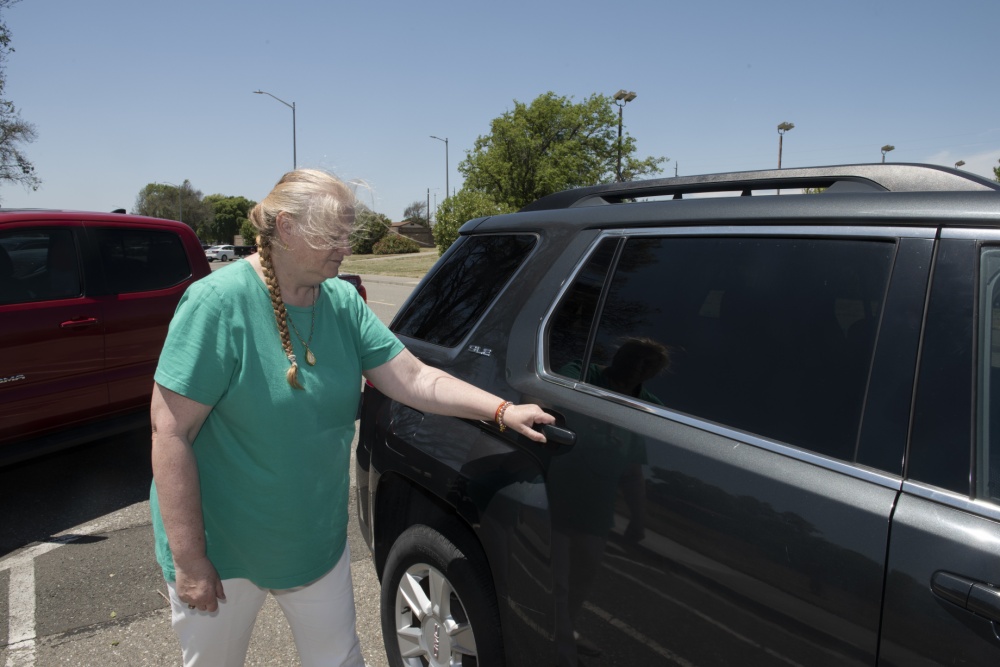Ride-share Tips: Advice for Riding with Strangers
5 min read
TRAVIS AIR FORCE BASE, CA, UNITED STATES
Story by Tech Sgt. James Hodgman
60th Air Mobility Wing Public Affairs
(Editor’s Note: The name Sara is a fictitious name used to protect the privacy of the individual mentioned in this story.)
Sara climbed into the backseat of a sport utility vehicle unaware of what’s happening around her.
After a night of drinking at a bar in Vacaville, California, she requested a ride home through Uber. Before entering the vehicle, she failed to confirm who the driver is and whether or not she was entering the right car. She was completely unaware of her surroundings.
I know all this because I was Sara’s driver that night.
During the 30-minute trip to her residence in Winters, California, I had to pull over twice so Sara could throw up. A little after 2 a.m. on a Saturday morning, we arrived at her house and came to a stop near a curb approximately 60 feet from her front door.
“Have a good night,” I said.
“Thanks,” Sara replied as she stumbled out of the vehicle.
Before driving off, I noticed Sara wasn’t walking toward her front door. For some reason, she was wandering into traffic. I quickly rushed to her and escorted her to her front door.
“Who are you?” she asked.
“Just your driver,” I replied. “I want to make sure you are safe.”
I have been a driver for Uber and Lyft for two-and-a-half years. To date, I’ve provided more than 2,000 people with rides to their destinations all over the San Francisco Bay Area, to Sonoma wineries, Sacramento and Chico, California. However, not everyone who drives for a ride-share company is concerned about the passenger’s safety. Additionally, not everyone who uses ride-share services are alert to safety as they should be.
Numerous ride-share drivers have been accused of dangerous behavior such as stalking, kidnapping and harassment. In South Carolina, a 21-year-old college student mistakenly entered the car she thought was meant to drive her home after requesting an Uber ride. The driver of that car was not an Uber driver. Fourteen hours later, her dead body was found in a field by turkey hunters. The driver who picked her up that night has been arrested and charged with her murder.
During my time as an Uber and Lyft driver, I have noticed many people tend to take unnecessary risks when using ride-share services and I want to provide a few tips that may help ensure your safety on a future ride-share trip.
First, know your destination. Know the place you are going and the address. This may sound pretty simple, but several people have requested rides from me without knowing exactly where they were going. This leads to me asking for details about their destination before picking them up. In most cases, rideshare drivers do not know where you are headed until you are in their car, so it’s common for them to ask about such details.
One customer who requested a ride from the Sacramento International Airport to an Embassy Suites Hotel could not tell me which hotel in that chain of hotels she was going. When I asked for clarification to which hotel was the one she needed to be driven, she asked me to cancel the ride.
I refuse to give rides to people if they can’t explain what their destination is. I do this for safety reasons. If you are willing to enter the vehicle of a stranger hoping he or she takes you to where you want to go, you are accepting tremendous increased risk to your life with that decision.
Second, always ensure the license plate, as well as the make and model of the vehicle shown in the ride-share application matches the vehicle that shows up. The majority of ride-share customers I have given rides to failed to do this. The vehicle should also have the appropriate ride-share company stickers displayed for you to see before you enter the vehicle.
It’s important to remember that you are about to enter a car with a complete stranger. You do not know this person. People who are cleared to drive with ride-share companies like Uber and Lyft have cleared background checks, but you should still take a few moments and confirm you are getting in the correct vehicle and your driver is the correct driver. Simply hopping into a car with someone you assume is your driver is dangerous. Don’t do it.
Third, always be aware of your surroundings and the route your driver is taking. I’m not saying you can’t look at your phone, talk to a friend who is along for the ride with you or check your email, but you want to be aware of what’s happening around you. This awareness will help ensure the driver is actually driving to the destination you want to go to and taking the route you prefer. If you notice you seem to be headed in the wrong direction or become concerned, discuss this with the driver. He or she could have made a mistake. If that doesn’t get you headed in the right direction, you can report the situation in the ride-share app and even request emergency assistance via 911 if you feel threatened in the Uber app. Lyft will soon offer an option to contact emergency services within its app as well.
Fourth, remember if you are a passenger in the backseat, that your driver must keep his or her attention on the road so you can get to your destination safely. Making statements like “It’s the house over there,” while arbitrarily pointing, expecting the driver to take his or her eyes off the road to see where you are pointing could lead to an accident. It is much safer to provide exact verbal instructions if clarification is needed. “Sir, my house is the blue one on the right and it’s the third house down from the stop sign,” is a good example.
While there is no guarantee anyone will be safe every moment they are using a ride-share service, following these tips may help you avoid dangerous situations.





